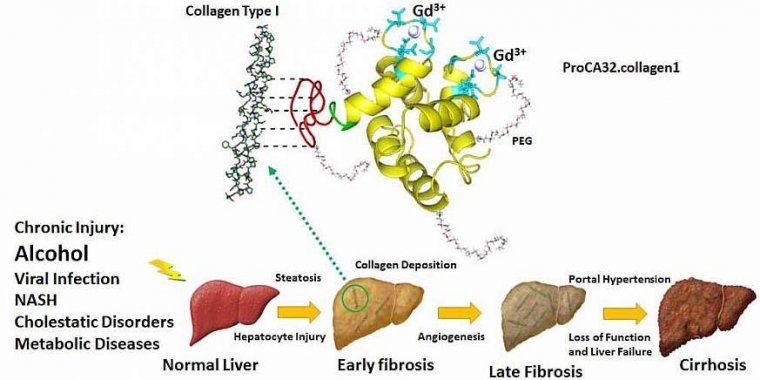| Health / Health News |
New compound helps find early signs of liver damage
A new compound that binds to, and enables MRI imaging of, liver cells in the early stage of disease, has been developed by scientists.

Novel collagen-targeted protein MRI contrast agent enables non-invasive detection of early stage of liver fibrosis by MRI. Photo: Jenny J. Yang, Ph.D., Georgia State University
Researchers report that, in imaging studies of animal models of liver disease, the new compound (a protein-based MRI contrast agent) can accurately detect early stages of chronic liver disease, including mild fibrosis.
The new compound was also able to assess the severity or stage of liver damage without the need of biopsy.
An invasive procedure that involves the surgical removal of liver tissue, biopsy is the current standard for diagnosing and staging chronic liver diseases. (National Institutes of Health)
YOU MAY ALSO LIKE





